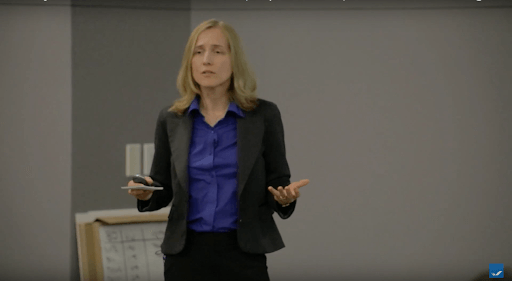I was recently asked by the Society of Women Engineers to give a talk on leadership. The organizers of the event asked me to share my story of how I went from an engineering role to running a company. In preparing for the talk, it was a good opportunity for some self-reflection, to really think back on those pivotal moments and actions that made a difference as I progressed in my career.
While I was planning on discussing some characteristics that are typical to women in engineering, it was important to me that the talk applied universally to all engineers, not only women. For that matter, even though I did approach the talk from the lens of being an engineer, I hoped it would also be applicable to other professionals wanting to move up into leadership roles in any industry.
What are some characteristics of an engineer?
I started by asking the audience to list traits typically associated with engineers. The responses included problem-solver, analytical, pragmatic, innovative, data-driven, hands-on, curious, organized, detail-oriented, methodical, and being a team player. Having done some reflection on this before my presentation, I then shared my top 10 traits that had affected my journey from engineering to leadership:
- Attention to detail
- Analytical and logical
- Creative problem-solver
- A good listener
- Perseverance and meeting commitments
- Willingness to ask for help
- Connecting to people
- Communication skills
- Ambitious
- Confident
I believe that teaching through storytelling is powerful since it gives people context to remember various points. Consequently, I structured the talk around my personal story and wove in leadership lessons along the way. One of the first stories I shared was from my first job as a mechanical engineer.
After a few weeks on a project, I realized that a client wasn’t aware of all the detailed work that we had been doing. I asked the senior engineer if I could share progress via weekly email reports. He agreed that it sounded like a good idea, so I started writing up what had been done each week and sending the status reports to the client. This was one of those areas that distinguished me from other engineers who were also performing good technical work. It was by communicating what I was doing, not just the level of my technical work, that set me apart. Later, the client told my boss that he wanted me to work on his next project as well.
11 lessons in leadership for engineers
Thus, my first leadership lesson was:
1. Communicate what you’re doing, even when you don’t have to.
I continued this pattern of sharing a story and accompanying leadership lesson as I moved through the various job positions in my career. I also discussed which of those 10 original traits I needed to dial up and, towards the end, which of them I needed to turn down (like the attention to detail) to become a more effective leader. The rest of the leadership lessons I shared were:
2. Stick to your commitments.
3. How you present yourself can be as important as your technical skills.
4. Tell people your career goals and aspirations.
5. Ask for help.
6. Listen first to understand the needs.
7. Develop ways of presenting complex data in a simple way.
8. Who you know can be more important than what you know.
9. Practice ownership thinking.
10. Sign up for new opportunities, even if you’re not 100 percent sure you can do them.
11. Your effectiveness as a leader is not defined by what you get done personally, but by what results your team achieves.
As I moved into higher roles in the company, I also needed to pick up new skills such as delegating, business knowledge, making faster decisions, networking, and public speaking. I discussed the importance of taking initiative, being willing to get out of your comfort zone, and how women sometimes have a harder time with showing ambition and confidence.
Towards the end, I summarized by sharing my leadership do’s and don’ts:
For advice from the entire discussion, a video and the slides are also available. And as always, continue following the Simplexity blog for more on our unique approach to product development.
Update: Since this blog has been published, Dorota Shortell has given this presentation at Intel’s Women @ Intel Network (WIN) event. The recorded keynote presentation is available to watch here.


